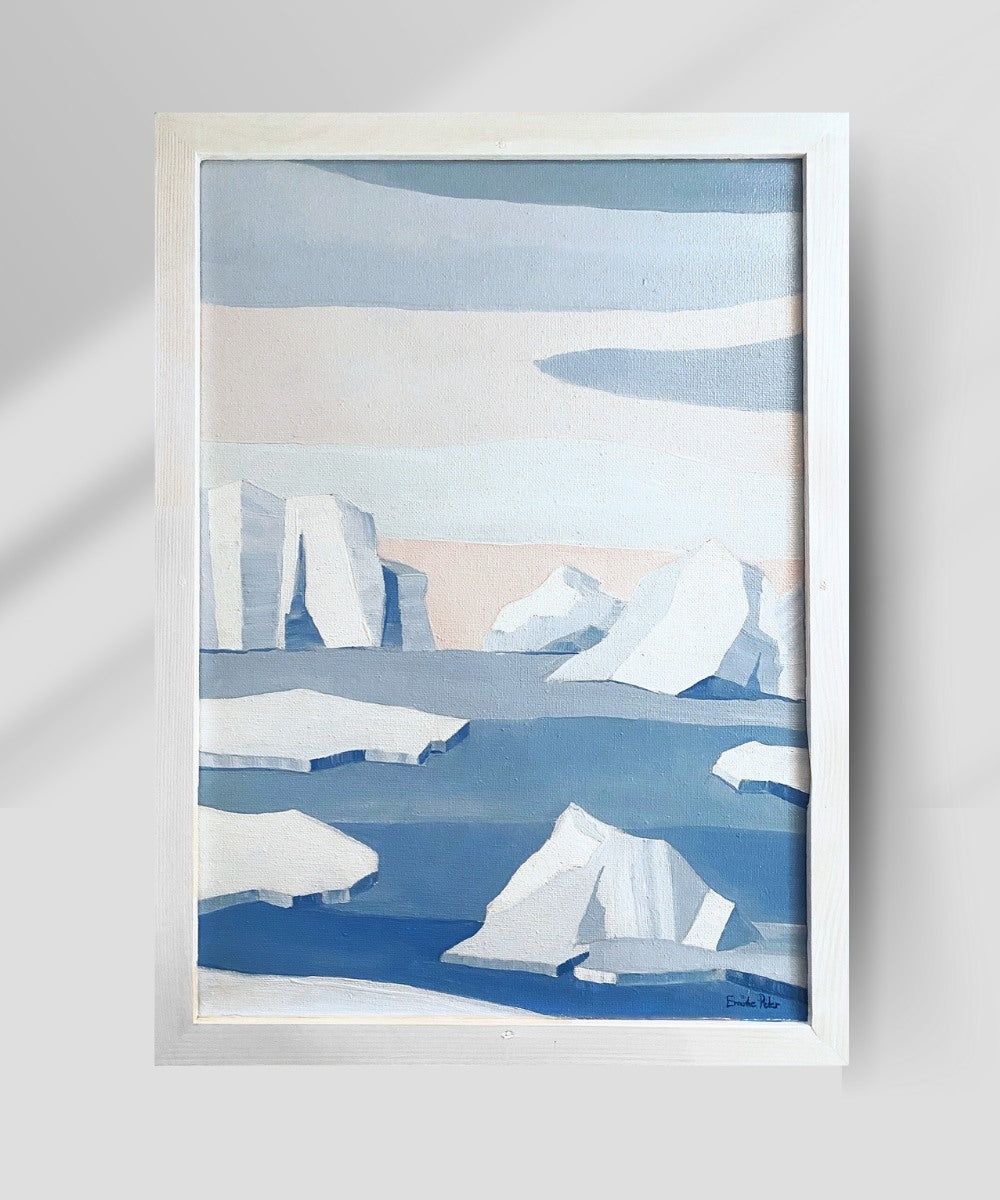
The Story of the Ice World oil painting
During the austere winter of 1893, Captain Palmer ventured to the southernmost reaches of the navigable world, where his ship, the HMS Endurance, found itself surrounded by the majestic frozen landscapes of the Antarctic region. His expedition, meticulously documented for the Royal Geographical Society, brought him face to face with the breathtaking splendor of what he called “a vast Ice World unlike anything known to civilized man.”
The Captain’s journal entries from this period reveal his profound fascination with the enormous ice formations that dominated the seascape. Towering icebergs, some reaching heights of over one hundred feet, drifted silently through the frigid waters, their crystalline surfaces refracting the pale sunlight into prisms of blues and whites. Palmer’s precise sketches captured the architectural grandeur of these frozen monuments, their jagged edges and smooth planes documented with scientific accuracy and artistic appreciation.
Navigating the Ice World
“The Ice World presents a navigator’s nightmare and a naturalist’s dream,” Palmer wrote in his leather-bound journal. His detailed observations described how the ship cautiously maneuvered between massive ice floes that stretched to the horizon, creating a patchwork of white plains interrupted by channels of dark, forbidding water.
Palmer was particularly struck by the deceptive silence of this frozen realm. “The Ice World appears static and eternal,” he noted, “yet one is occasionally startled by the thunderous crack of calving ice, as if the very landscape is alive and breathing.” His accounts describe moments of breathtaking beauty when the low Antarctic sun illuminated the ice fields, creating a glittering panorama that seemed almost otherworldly in its splendor.
The Captain’s meticulous documentation of this pristine Ice World, with its precise measurements and evocative descriptions, has been transformed into our painting “Ice World” – a visual tribute to one of the last great frontiers encountered during the age of classical exploration, where human determination met nature’s most formidable and beautiful creations.






